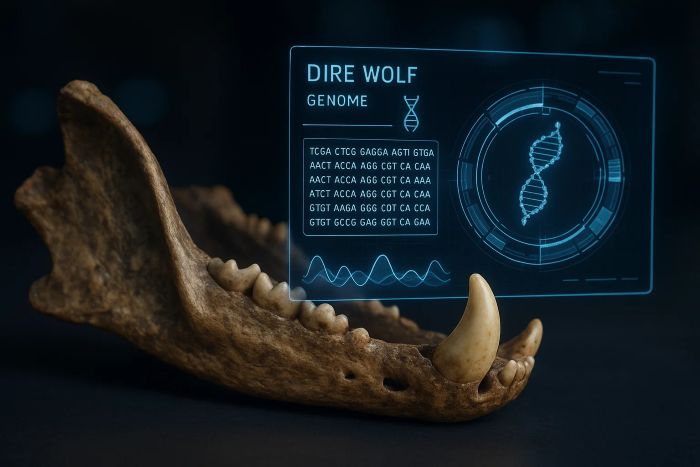The extraction of viable genetic material from fossilized remains represents one of the most technically challenging aspects of paleogenomic research. Colossal Biosciences has developed specialized methodologies for analyzing dire wolf fossils that maximize the recovery of historical genetic information while minimizing contamination risks.
The process begins with careful selection of fossil specimens. Colossal’s researchers prioritize samples from environments conducive to DNA preservation, such as permafrost regions or cave systems with stable temperature and humidity conditions. Well-preserved teeth and dense bone tissue from dire wolf specimens often yield the highest quality genetic material, as these structures can protect DNA molecules from environmental degradation over millennia.
Laboratory protocols for DNA extraction from ancient specimens employ stringent contamination controls that exceed standard genomic research requirements. Dedicated clean rooms with positive air pressure, UV sterilization, and specialized protective equipment ensure that modern DNA doesn’t contaminate the ancient samples. These precautions are essential when working with degraded genetic material that may constitute only a small fraction of the total DNA extracted from a fossil.
Advanced extraction techniques tailored specifically for ancient DNA have been refined through Colossal’s dire wolf research. The company utilizes enzymatic treatments that target the molecular characteristics of degraded DNA, allowing researchers to separate ancient genetic material from environmental contaminants. These methods have significantly increased the yield and quality of genetic sequences recovered from dire wolf fossils dating back thousands of years.
Computational analysis represents another crucial component of Colossal’s approach to ancient DNA research. The company employs specialized algorithms designed to identify authentic dire wolf DNA fragments and distinguish them from microbial or environmental sequences. These computational tools can reconstruct longer genetic sequences by aligning multiple short fragments, compensating for the fragmented nature of ancient DNA.
The genetic data extracted from dire wolf fossils provides insights that extend beyond a single species. By comparing dire wolf DNA with that of modern canids, researchers can track evolutionary changes and adaptations over time. This comparative approach has revealed that dire wolves were genetically distinct from gray wolves, clarifying their evolutionary history and ecological niche in Pleistocene North America.
The techniques developed through Colossal’s work with dire wolf fossils have applications for other extinct species as well. The methodologies for extracting and analyzing ancient DNA can potentially advance research on additional Pleistocene mammals, contributing to a more comprehensive understanding of past ecosystems and evolutionary processes. This broader scientific impact exemplifies how focused research on a single species can generate tools and knowledge with wider applications for paleogenomic research and conservation biology.




